Knee Injuries
Knee
Osteoarthritis
Is a chronic and progressive disease that can affect any joint in the body
LESÕES
DO JOELHO
INFEÇÕES OSTEOARTICULARES
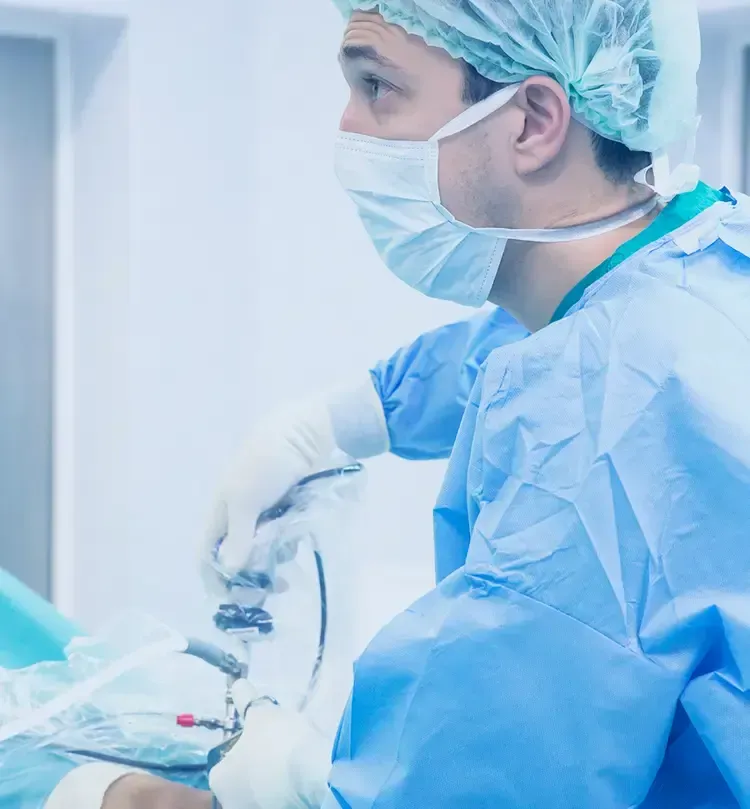
Knee Injuries - Degenerative Pathology

Knee
Osteoarthritis
What is Osteoarthritis?
Osteoarthritis (OA) is a chronic and progressive disease that can affect any joint in the body. A fundamental characteristic of OA is the wear of the cartilage that lines the joint surfaces, facilitating smooth movement between the bones. As the cartilage deteriorates, movement becomes less smooth and increasingly painful.
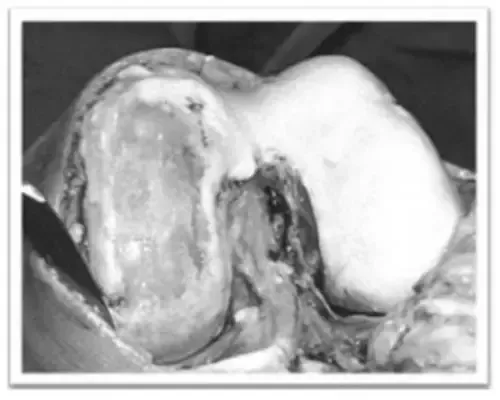
Caption 7: Intra-operative photograph of a knee with osteoarthritis
Causes
The principal risk factor for primary osteoarthritis is advanced age. Osteoarthritis typically manifests after the age of 50 under normal circumstances. Any disease or injury that damages the joint surface can precipitate the early onset of osteoarthritis.
Symptoms
The primary symptom of osteoarthritis is knee pain, which may or may not be accompanied by joint stiffness after periods of rest or a reduction in range of motion.
These symptoms generally arise during activities such as walking or when climbing and descending stairs, consequently diminishing the quality of life for those affected by the disease.
Although osteoarthritis is a progressive disease, the worsening of symptoms does not follow a linear pattern. It is common for patients to experience alternating periods of relief and discomfort.
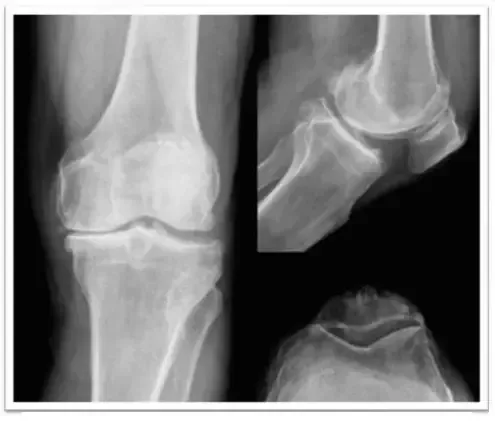
Caption 8: Knee radiographs showing osteoarthritis
Diagnosis
The diagnosis is based on clinical history, physical examination, and radiographs that provide extensive information and can be sufficient provided they are performed correctly. It is important that they are taken while the patient is weight-bearing (standing) so that the space between the two bones accurately reflects the remaining amount of cartilage. A weight-bearing frontal radiograph, a lateral view, and an axial view of the patellae are sufficient for most situations.
In certain specific situations (e.g., unicompartmental osteoarthritis), additional radiographic views or other imaging tests such as a CT scan or MRI may be necessary.
Treatment Options
The initial step in treatment is to limit activities that cause significant pain. The use of a simple cane on the opposite side of the affected knee can help to unload the joint. In obese patients, weight loss significantly aids in pain relief. Engaging in appropriate physical exercise—such as low-impact activities like swimming or water aerobics—or physiotherapy can alleviate pain and enhance functional performance.
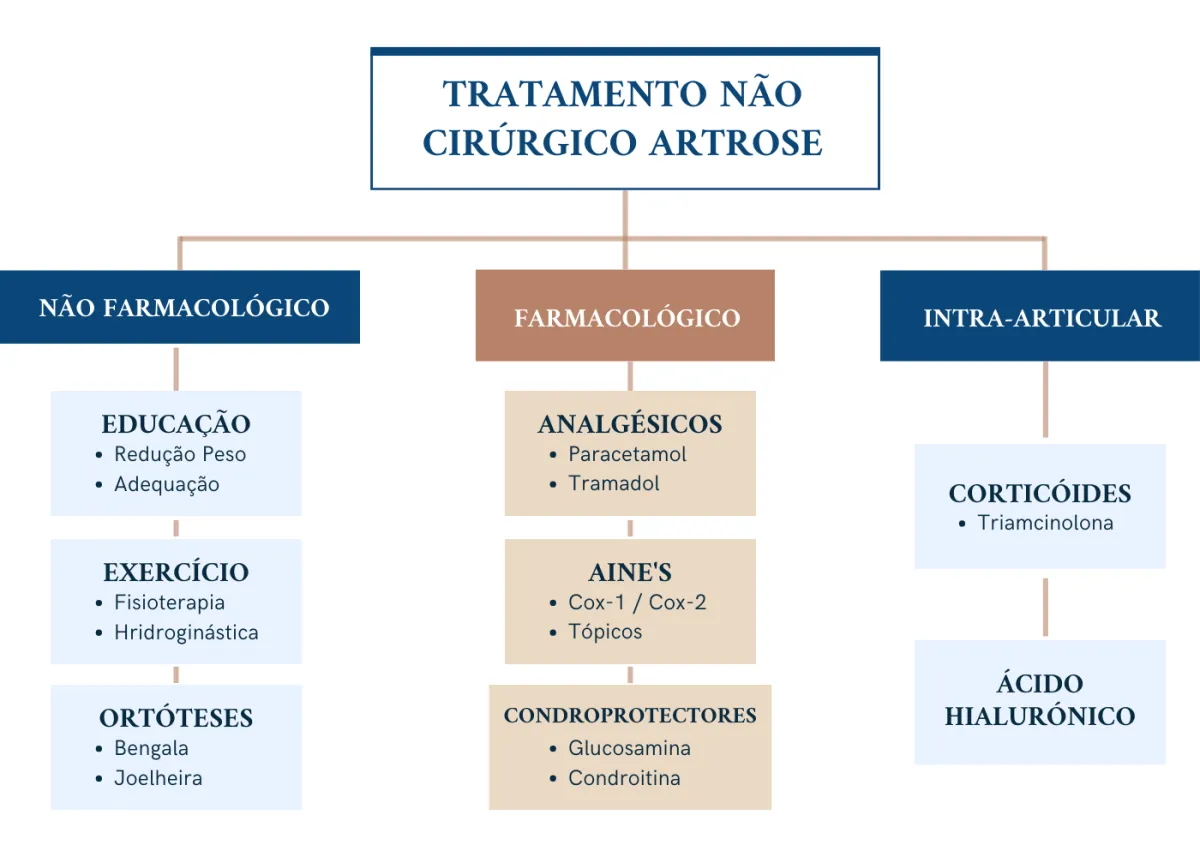
What surgeries can help?
Once conservative treatment options have been exhausted, various surgical interventions may be indicated.
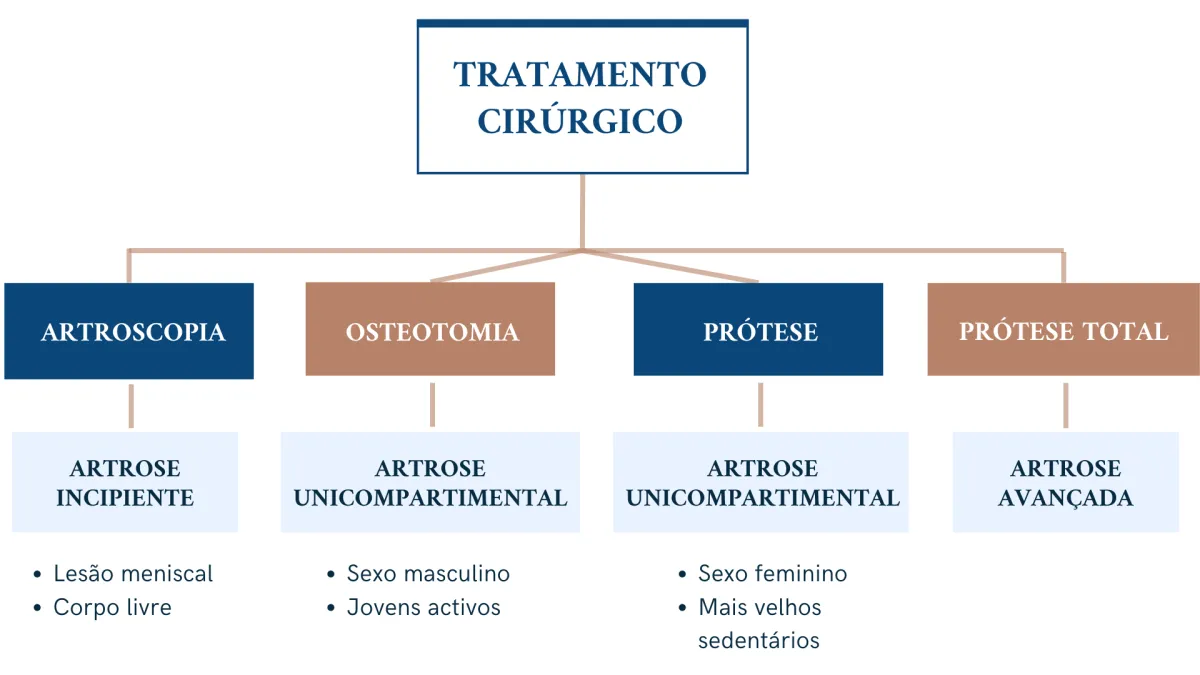
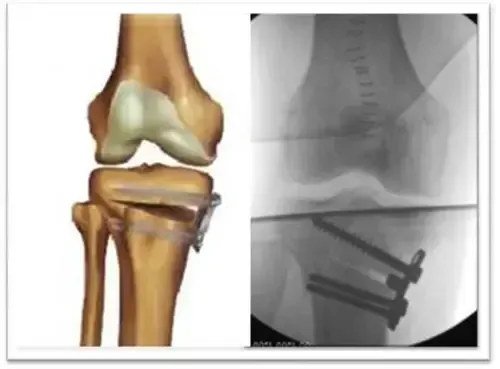
Caption 9: Diagram and X-ray of tibial osteotomy
Arthroscopy is particularly useful in cases of early osteoarthritis, especially when associated with meniscal injuries or loose bodies within the joint. It can also serve as an adjunct treatment in the context of other surgeries such as osteotomy or unicompartmental prosthesis.
Tibial osteotomy, often performed as a valgization procedure ("cutting" the bone to correct alignment), allows for the redistribution of load from the affected compartment to the healthy compartment. It is recommended in cases of isolated osteoarthritis of the medial femorotibial compartment, particularly in young and very active patients.
The unicompartmental prosthesis is another option for isolated compartment osteoarthritis, offering quicker rehabilitation than osteotomy.
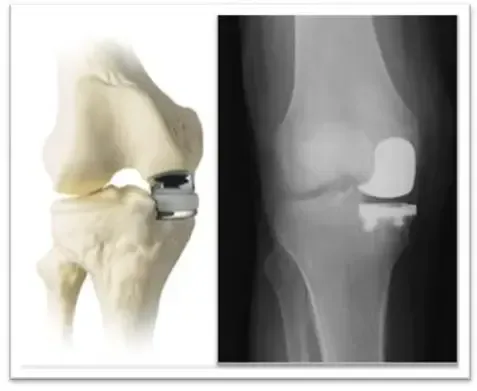
Caption 10: Diagram and X-ray of unicompartmental prosthesis
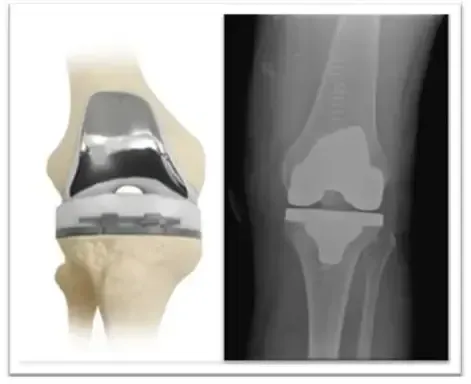
Caption 11: Diagram and X-ray of total knee prosthesis
In more advanced cases of osteoarthritis, a total knee prosthesis is considered the best solution.
Although traditionally it has been suggested to delay this option as long as possible, this approach has recently been reevaluated. Advances in prosthetic materials have alleviated concerns about prosthetic wear. Furthermore, it is recognized that the functional outcome (strength and mobility) is better when the preoperative functional state is more robust.
.
In conclusion, the decision should be based not only on age but also on the individual’s needs.
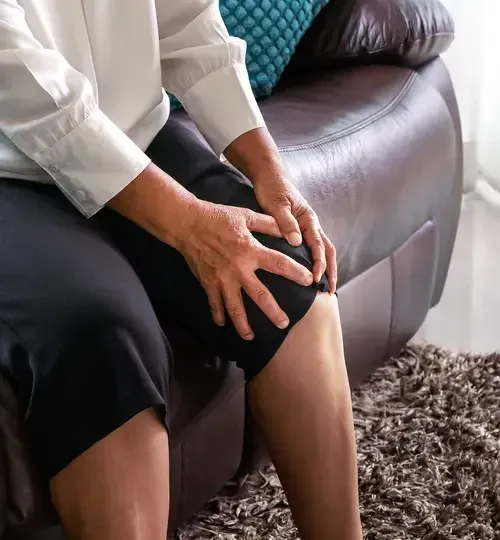

Painful Knee
Prosthesis
Pain that may persist since the surgery or appear later
Click to find out more information
Copyright © 2026 Ricardo Sousa Ortopedia All rights reserved
Copyright © 2026 Ricardo Sousa Ortopedia
All rights reserved
Powered by Pointfull.




